Did you know Rome’s original Alfredo sauce recipe used just two ingredients when it was created 100 years ago? Today, we’ll explore how to make Alfredo sauce that rivals any restaurant’s version, right in your own kitchen.
This classic sauce transforms kitchen staples – butter, heavy cream, and Parmesan cheese – into a rich, creamy delight in just 5-10 minutes. Our easy Alfredo sauce recipe yields two generous cups that perfectly coat your favorite pasta, making it ideal for casual weeknight dinners or when guests visit. If you’re looking for a quick Alfredo sauce that doesn’t compromise on taste, you’ve come to the right place.
Creating restaurant-quality Alfredo sauce at home requires more than combining ingredients. The right techniques, temperature control, and ingredient selection distinguish a good sauce from an exceptional one. This recipe for Alfredo sauce will guide you through the process step by step.
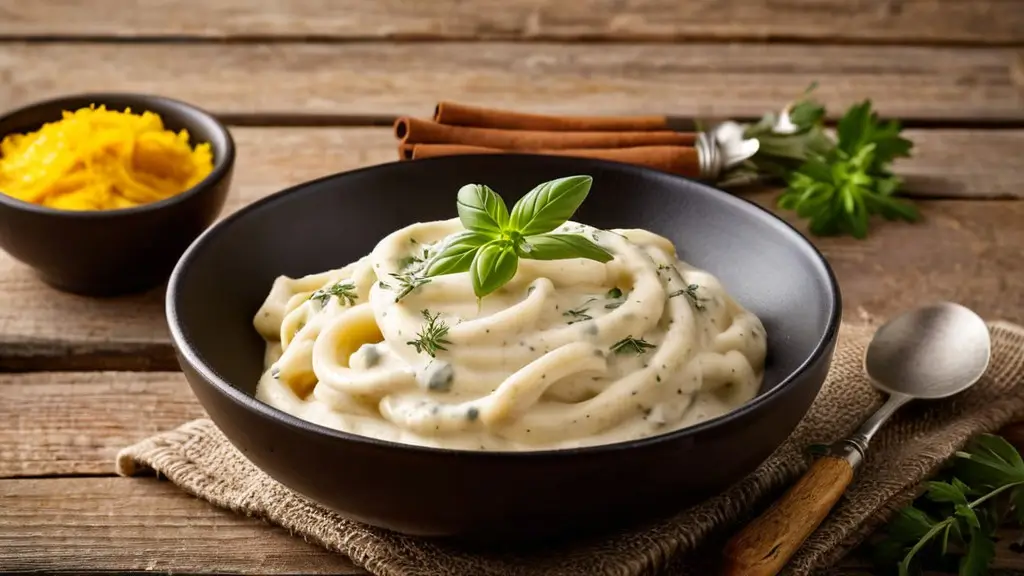
Ready to become skilled at this timeless Italian classic? Let’s take a closer look at the key steps and professional techniques that will help you create the perfect homemade Alfredo sauce every time.
Table of Contents
Essential Ingredients for Restaurant-Quality Alfredo
Making the best Alfredo sauce recipe depends on picking the finest ingredients. Every component plays a significant role in creating that signature silky texture and rich flavor of a simple Alfredo sauce.
The Right Type of Parmesan
Premium Parmigiano Reggiano is the life-blood of exceptional Alfredo sauce. You’ll get the smoothest texture by freshly grating the cheese with a microplane or the small holes of a box grater. Store-bought shredded cheese contains anti-caking agents that stop proper melting and leave you with a grainy texture. Romano cheese or a parmesan-Romano blend can work just as well and keep the sauce’s authentic character.
Choosing Your Cream
Heavy whipping cream with its fat content of 36-40% forms the foundation of a luxurious Alfredo sauce. This high-fat percentage will give a naturally thick consistency without extra thickeners. Looking for lighter options? Here they are, listed by fat content:
- Half-and-half (10-12% fat)
- Whole milk (3-4% fat)
- Part-skim milk (less than 1% fat)
Fresh vs Prepared Garlic
Fresh garlic packs unmatched flavor intensity and vibrancy. When minced or pressed, fresh garlic releases compounds that create that distinctive sharp, spicy taste. Pre-minced options lack the dynamic flavors of fresh garlic because of pasteurization and added preservatives like citric acid. On top of that, it develops bitter notes over time and affects the sauce’s overall taste. A garlic press gives optimal results by maximizing flavor extraction – more surface area means better taste in your sauce.
Professional Techniques for Perfect Sauce
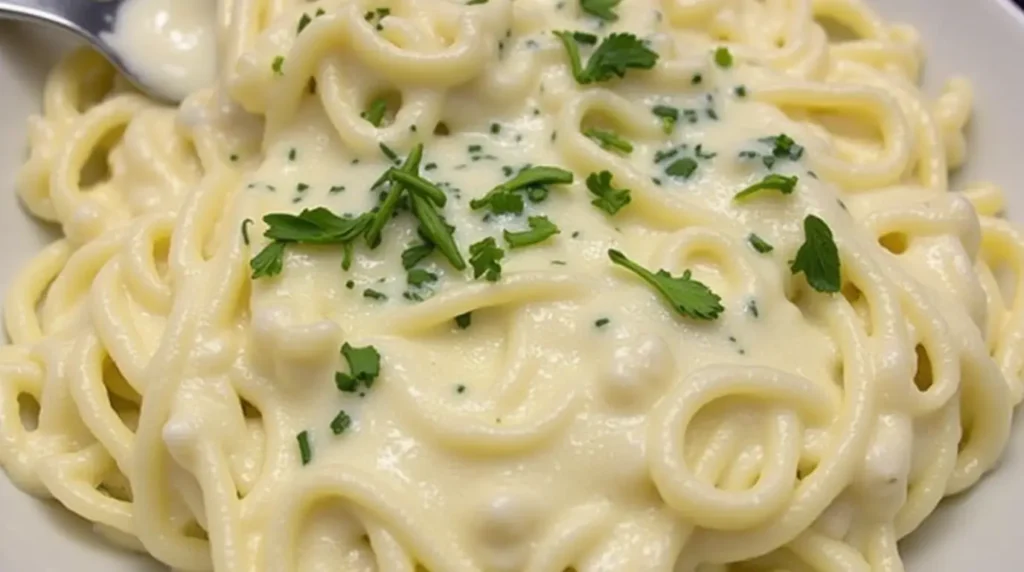
Becoming skilled at making the perfect Alfredo sauce needs precise techniques and careful attention to temperature control. These methods will help you achieve that restaurant quality Alfredo sauce you’re aiming for.
Temperature Control Methods
A silky-smooth Alfredo sauce depends on the right heat level. You should melt butter over medium-low heat and add cream to create the base. The mixture needs a gentle simmer – never let it reach a rapid boil.
- Start with medium-low heat for melting butter
- Reduce to low heat after adding cream
- Maintain temperature between 150-160°F (70°C)
- Remove from heat before adding cheese
The sauce might separate or become grainy if it gets too hot, so lower the heat right away. Watch out for signs like oil separation or curdling that show you need to adjust the temperature.
Proper Cheese Integration
The way you add cheese makes the most important difference in getting that restaurant-quality texture. Use the small holes of a box grater to finely grate the Parmesan cheese. This creates a snow-like texture that melts better.
Take the pan off the heat before adding Parmesan to get perfect cheese integration. Add small portions of freshly grated cheese gradually and let each batch melt completely before adding more. This stops the proteins from denaturing, which would make the sauce grainy.
Save some pasta cooking water before draining to get the ideal consistency. This starchy liquid works as a natural emulsifier and helps bind the sauce. The sauce might get too thick, so add small amounts of the reserved pasta water while whisking to thicken it to your desired consistency.
Note that constant stirring throughout the process keeps the sauce from sticking to the pan’s bottom and forming lumps. Your homemade Alfredo sauce will match any restaurant version when you master temperature control and cheese integration properly.
Common Mistakes to Avoid
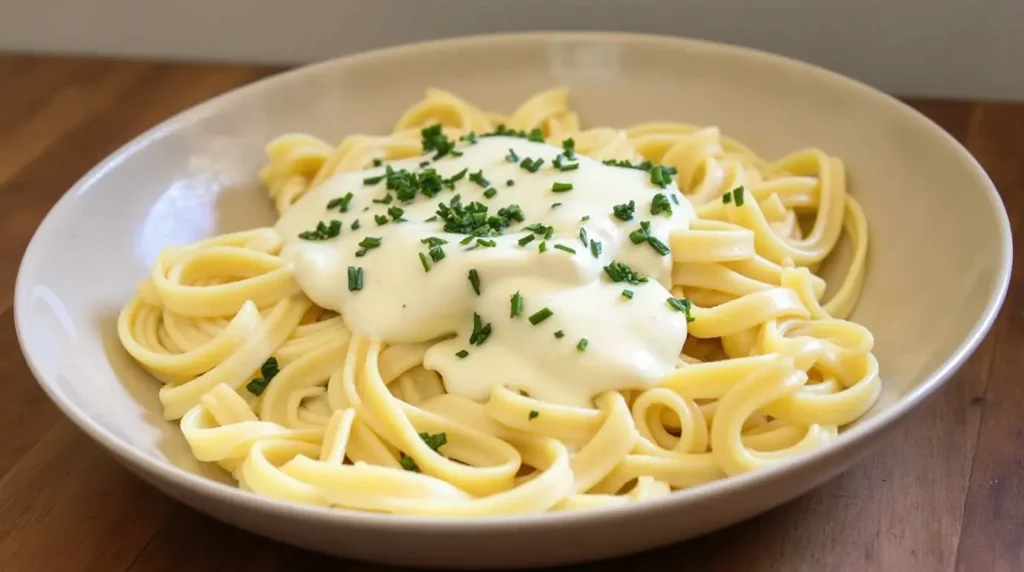
Even seasoned cooks struggle to make the perfect Alfredo sauce. You can prevent sauce failures and get consistent results by understanding common mistakes when learning how to make Alfredo.
Heat Level Issues
The right temperature will make or break your sauce. Overheating causes the sauce to separate, which creates an oily layer on top. Your sauce should never reach boiling point – this breaks down the proteins and gives you a grainy texture. The cheese won’t break down and clump if you keep the heat low to medium throughout cooking.
Cheese Selection Errors
The right cheese and proper preparation will make a huge difference in sauce quality. Pre-grated cheese contains anti-caking agents that stop it from melting smoothly. The cheese cut from the wheel starts to dry and sour as time passes, and this affects both its taste and performance.
These cheese selection guidelines will help you get the best results:
- Pick fresh, high-quality Parmigiano-Reggiano (24 months aged)
- Stay away from pre-shredded varieties with anti-caking additives
- Don’t use cream cheese – it creates dense, gritty texture
- Mascarpone or mozzarella cheese works well as an alternative to add thickness without overpowering flavor
Timing Problems
The timing of adding ingredients is vital. Your sauce might separate if you add cold cream to hot ingredients. Room temperature ingredients are essential for proper emulsion. The sauce will clump if you add cheese too quickly or at the wrong temperature.
Critical Warning Signs: The sauce has broken if melted butter separates from the white base and floats like olive oil near the surface. Quick action can often save a struggling sauce – just reduce the heat and stir constantly.
Serving and Storage Tips
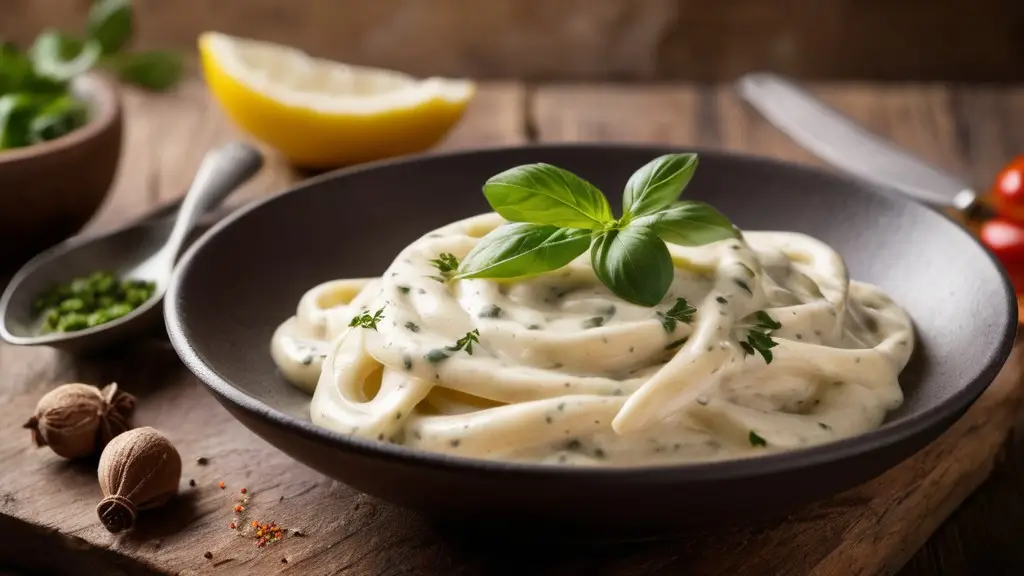
The right serving and storage techniques help your homemade Alfredo sauce taste and feel just like a restaurant’s version.
Best Pasta Pairings
Fettuccine is still the classic choice for Alfredo sauce. Its wide, thick shape soaks up the most creamy sauce in each bite. While fettuccine is traditional, other pasta shapes work great too:
- Ridged penne or fusilli – grooves and crannies trap the sauce effectively
- Tagliatelle – slightly wider than fettuccine, offering substantial support for the rich sauce
- Bucatini – hollow center allows sauce absorption both inside and out
You can balance the richness by serving your Alfredo pasta with roasted broccoli or a light salad. For a heartier meal, consider making a chicken Alfredo sauce recipe by adding grilled chicken to your pasta.
Reheating Methods
Your Alfredo sauce stays fresh in an airtight container in the refrigerator for up to 3-5 days. The ingredients might separate during storage, so proper reheating helps maintain the sauce’s creamy texture.
Stovetop Method (Recommended): Heat the sauce over low heat in a saucepan and stir frequently. A splash of milk or cream restores the original consistency. This method gives you the best control over temperature and texture.
Microwave Technique: Mix the sauce with 2 tablespoons of milk or cream in a microwave-safe container. Heat at 50% power in 30-second intervals and stir between each interval. This stops the sauce from separating or becoming oily.
Oven Approach: Larger portions work best in a covered baking dish at 350°F. This gentle heating method keeps the sauce’s integrity but takes more time than other methods.

Note that these points prevent separation while reheating:
- Keep the sauce below boiling temperature
- Stir constantly during reheating
- Add small amounts of liquid (milk, cream, or pasta water) as needed
Conclusion
Quality ingredients and proper technique will help you create restaurant-quality Alfredo sauce from scratch. The foundation of this classic Italian sauce comes from authentic Parmigiano Reggiano, fresh heavy cream, and minced garlic. For added flavor, you can experiment with Italian seasoning or a pinch of white pepper.
Your success depends on temperature control. The signature silky-smooth texture will come from careful heat management and proper cheese integration techniques.
These professional tips and understanding of common pitfalls can help you create the best Alfredo sauce recipe at home. The right pasta pairing and proper storage of leftovers will maintain that fresh, creamy consistency.
Your culinary skills deserve an upgrade. More recipes and food ideas await at recipesnutritious.com where you can learn to create restaurant-worthy dishes in your kitchen. Becoming skilled at classic sauces like Alfredo creates countless delicious possibilities, from simple Alfredo sauce to more complex variations like chicken Alfredo sauce.
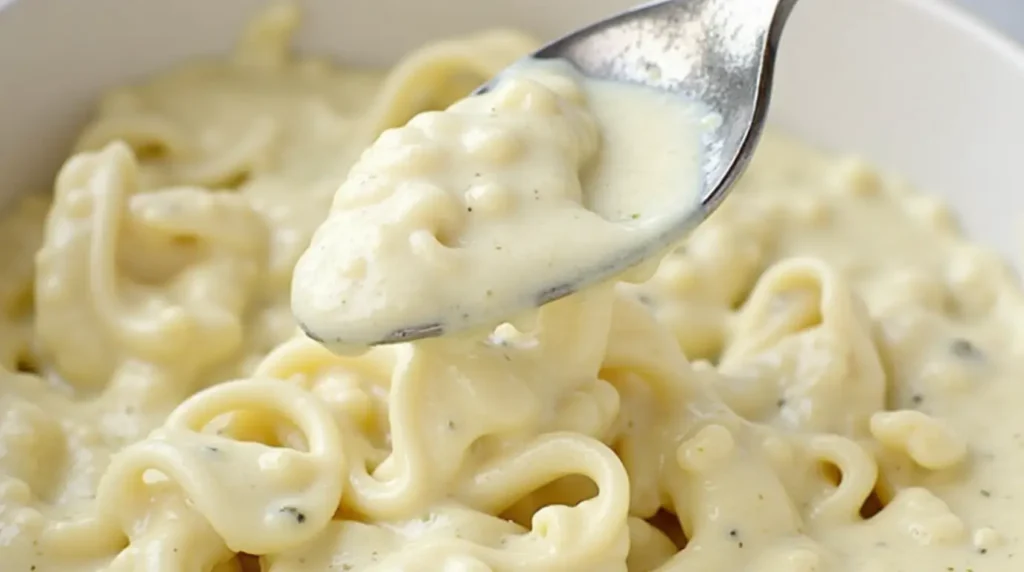
FAQs
Q1. How can I make my homemade Alfredo sauce taste like a restaurant’s? To achieve restaurant-quality Alfredo sauce, use high-quality ingredients like authentic Parmigiano Reggiano, fresh heavy cream, and fresh minced garlic. Control the temperature carefully, never letting it boil, and gradually incorporate finely grated cheese off the heat for a smooth texture. Don’t forget to season with salt and pepper to taste.
Q2. What’s the secret to preventing my Alfredo sauce from becoming grainy? The key to avoiding a grainy texture is proper temperature control and cheese integration. Remove the sauce from heat before adding cheese, and gradually whisk in small portions of freshly grated Parmesan, allowing each addition to melt completely before adding more.
Q3. Can I use pre-shredded cheese for Alfredo sauce? It’s best to avoid pre-shredded cheese as it often contains anti-caking agents that prevent proper melting. Instead, use freshly grated Parmigiano Reggiano using a microplane or the small holes of a box grater for the smoothest texture.
Q4. What’s the best pasta to serve with Alfredo sauce? While fettuccine is the classic choice, other pasta shapes like ridged penne, fusilli, tagliatelle, and bucatini also work well with Alfredo sauce. These shapes have features that help trap and absorb the creamy sauce effectively.
Q5. How should I reheat leftover Alfredo sauce? The best method is to reheat Alfredo sauce on the stovetop over low heat, stirring frequently and adding a splash of milk or cream to restore its consistency. Alternatively, you can use a microwave at 50% power in short intervals, stirring between each interval to prevent separation. Remember to keep the heat low to maintain the sauce’s creamy texture.


1 thought on “How to Make Restaurant-Quality Alfredo Sauce Recipe (Ready in 15 Minutes)”
Comments are closed.